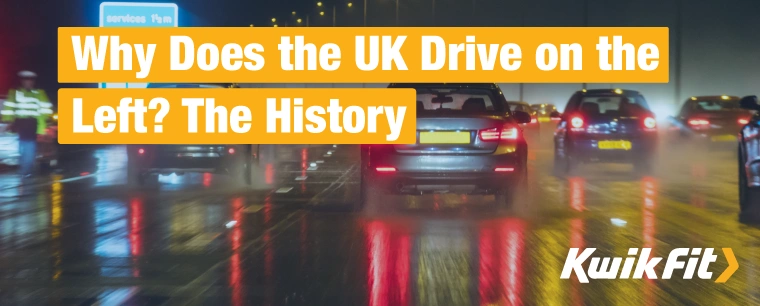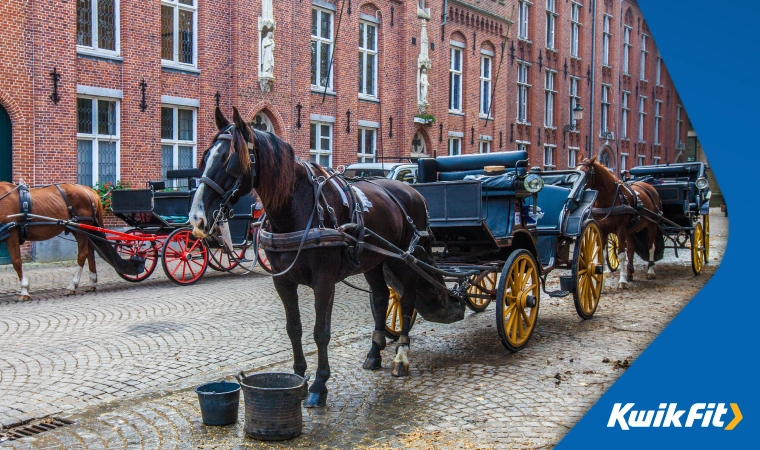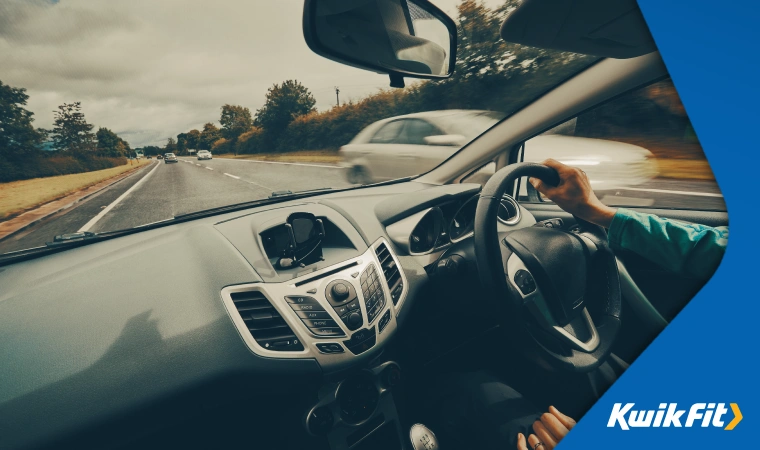Why Does the UK Drive on the Left? The History
Jack Dreyer | Tuesday 29th November 2022 12:45pm

If you’ve ever been abroad to almost anywhere in the world other than the UK, you’ll likely have noticed that everyone drives on the other side of the road – why is there a difference? Where did different road-side driving come from? And is there a better way? We thought we’d find out!
How did travellers pass each other before driving?

Something like a ‘traffic system’ seems like a very modern thing to be worrying about, but there appear to have been rule-of-thumb practices for traffic well into the ancient world.
Before there were cars there were carts and horses (and feet). And, for a lot of history, travelling was a very dangerous business. It was much easier, for example, for a small group to appear out of the trees, knock you off your horse, and steal all your stuff than it is for someone to get you out of your car and get away with it. To make matters worse, the poor historic traveller wouldn’t have been able to call the local police station either – so their goods were as good as gone.
Riding on the left, then, seems to have become custom as a way to always be on guard as the majority of people are right handed – and even left-handed folks would have usually learned to use weaponry (where they were allowed) with their right hands.
This is so that if you were to be attacked by an oncomer on the path, you could hold the reins with your left hand and swing a sword with your right.
This custom appears to go back in Britain at least as far as the Romans. It seems that they customarily drove (or, rather, rode) on the left-hand side of paths and roads.
This has stuck ever since.
Why did other places start driving on the right?

For most of time, which side of the path you rode on wasn’t at all set in stone. It was just a customary thing because, well, there weren’t speed cameras & traffic police sitting waiting to catch you out. Most carts had you sitting in the middle of the cart so that you had a central controlling spot for the horse(s), and if you were on foot or on a horse then you could theoretically choose to go wherever you wanted – a truly off-road world.
So it was just a way of passing other travellers in ways that minimised carts colliding, bashing wheels, or horses butting heads – which was particularly important in towns.
If you went to a different town, region, or country, you’d likely have to simply pass on whichever side was customary there.
This only started to become an issue with the invention of cars and road systems.
What started as customary road-passing practices throughout Medieval Europe then became real safety laws.
Outside of Britain, much of Europe customarily rode on the right after Napoleon – so when it came to the introduction of cars, which side people legally had to drive on tended to follow where they’d customarily driven/ridden before.
These customs and laws then moved to the rest of the world as Europe started colonising other parts of the world: countries that were formerly part of the British Empire or with strong ties to it (such as Australia or Cyprus), for example, still largely drive on the left while countries formerly part of the French or Belgian empires now drive on the right.
The notable exception here is the USA – which switched to right-side driving after the war of independence.
Countries have switched which side they drive on

A number of other countries have also switched sides – with Japan, for example, switching back to left-side driving in the mid 70s after the post-war US administration left. Sweden quite notably changed the entire system in 1967 to be in line with their European neighbours – changing hundreds of thousands of road signs in a single night.
These days, the side of the road that a country drives on is likely more to do with their immediate neighbours than who had previously invaded them. Many countries, for example, switched to right-side driving in order to get more readily-available cars built in the USA. Other countries conversely switched to left-side driving in order to have better access to cars produced for left-driving Japan.
Need car servicing?
To make sure you’re safe on our roads, get in touch with your local Kwik Fit centre for a whole range of vehicle maintenance and repair work.
In the meantime, for more interesting information about everything car-related, head to our blog.
Any facts, figures and prices shown in our blog articles are correct at time of publication.
Featured Articles
Is it Illegal to Drive With One Headlight?
Saturday 19th July 2025
Wondering if it’s illegal to drive with one headlight? Learn about the safety risks and penalties of illegal blown bulbs and why you should fix them promptly.
Air Con in EVs & Hybrids: Experts Answer Your Questions
Monday 30th June 2025
Does air con drain EV batteries? Can you use the air con while charging an electric car? Find out the answers to these questions & more from Kwik Fit’s experts.
Why Is Your Car Making a Noise? Fixes & Tips
Friday 13th June 2025
When your car starts making unexpected noises, it can certainly be quite disconcerting; it may be nothing to worry about, but here’s what you need to know.









